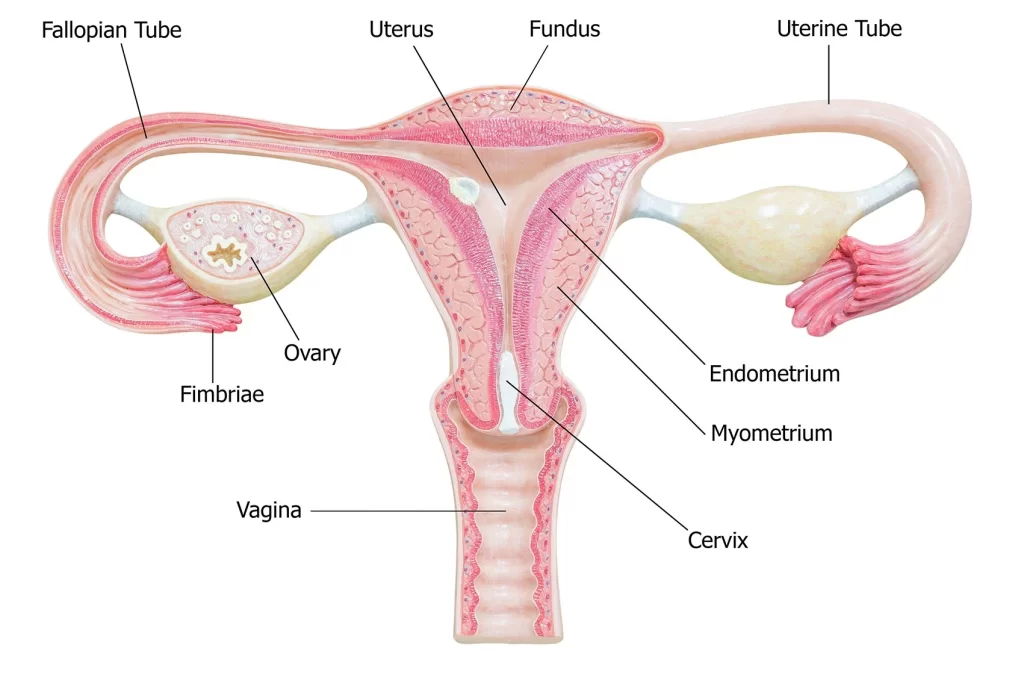What is a Hysterectomy?
A hysterectomy is a surgical procedure to remove the uterus (womb) — the organ where a baby grows during pregnancy. Depending on the medical condition, it may also involve removing the cervix, fallopian tubes, or ovaries.
As a gynecologist with over 23 years of experience, We, understand that the decision to undergo a hysterectomy is often emotional as well as medical. My goal is to ensure every woman receives compassionate guidance, clear information, and the best possible care throughout her treatment journey.

Types of Hysterectomy
The type of hysterectomy depends on the underlying condition and the structures involved:
- Total Hysterectomy – Removal of the uterus and cervix.
- Subtotal (Partial) Hysterectomy – Removal of the upper part of the uterus, keeping the cervix intact.
- Total Hysterectomy with Bilateral Salpingo-Oophorectomy – Removal of the uterus, cervix, fallopian tubes, and ovaries.
- Radical Hysterectomy – Removal of the uterus, cervix, part of the vagina, and nearby tissues (usually for cancer cases).
Common Reasons for Hysterectomy
A hysterectomy may be advised when other treatments have not worked, or the condition is severe. Common medical indications include:
- Uterine Fibroids causing pain or heavy bleeding
- Severe Endometriosis
- Uterine or Cervical Cancer
- Adenomyosis (thickening of uterine walls)
- Chronic Pelvic Pain
- Abnormal Uterine Bleeding unresponsive to medication
- Uterine Prolapse (when the uterus slips down into the vagina)
Types of Surgical Approaches
At Shree Clinic, I offer several advanced and minimally invasive approaches based on each patient’s condition and recovery needs:
- Abdominal Hysterectomy: Traditional open surgery through an incision in the lower abdomen.
- Vaginal Hysterectomy: Performed through the vagina without external cuts – faster recovery and minimal scarring.
- Laparoscopic Hysterectomy: Keyhole surgery using small incisions and a camera -less pain, faster healing, and shorter hospital stay.
Recovery and Aftercare
Recovery time varies depending on the type of surgery. Most women can return to normal activities within 2–6 weeks. After surgery, I closely monitor healing, manage pain, and guide you on post-surgical exercises and hormonal support if required.
You may experience mild abdominal discomfort, bloating, or fatigue initially- all of which improve gradually. Emotional support and counseling are also an important part of care at Shree Clinic, as hysterectomy can be both a physical and emotional transition.
Life After Hysterectomy
A hysterectomy can bring immense relief from chronic pain, heavy bleeding, or other distressing symptoms. Most women experience improved quality of life and freedom from discomfort.
If ovaries are removed during surgery, you may experience menopausal symptoms such as hot flashes or mood swings — these can be effectively managed through hormone therapy and lifestyle adjustments, which I personally guide each patient through.
Why Choose Shree Clinic for Hysterectomy Care?
At Shree Clinic, We, combine medical expertise with a compassionate approach to ensure each woman receives holistic, safe, and advanced care.
- Experienced Surgical Expertise – Over 23 years of experience in gynecology, laparoscopy, and women’s wellness.
- Advanced Minimally Invasive Techniques – Laparoscopic and vaginal hysterectomies for faster recovery and minimal scarring.
- Personalized Guidance – Every woman receives tailored care and emotional support before and after surgery.
- Comprehensive Women’s Health Approach – We look beyond the surgery – focusing on hormonal balance, recovery, and emotional well-being.
- Trusted Hospital Associations with Aditya Birla Hospital, Lotus Hospital, Jupiter Hospital, Pune. Cloud Nine Hospital, Surya mother and child Hospital and Oyster and Pearls Hospital.
Take the First Step Toward Relief and Healing
If you’ve been struggling with chronic pelvic pain, heavy bleeding, or uterine problems that affect your daily life, it may be time to discuss whether a hysterectomy is the right option for you.
At Shree Clinic, We, provide comprehensive evaluation, modern surgical options, and complete post-operative care – all in a compassionate, confidential environment.
- Consultation available online and offline at Shree Clinic Wakad .
- Dr. Sonali Chaudhari, MBBS, DGO, FICOG, Diploma in Aesthetic Gynecology
- Empowering women with informed, advanced, and empathetic gynecological care.